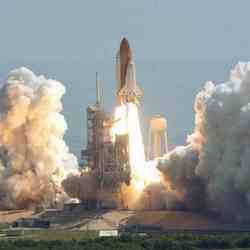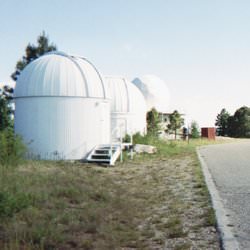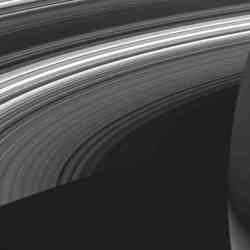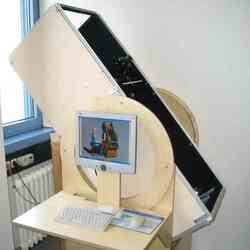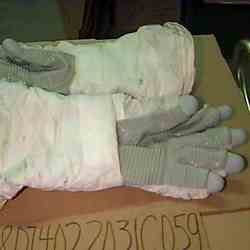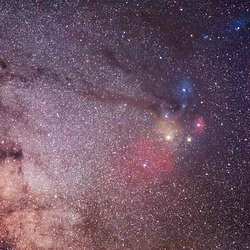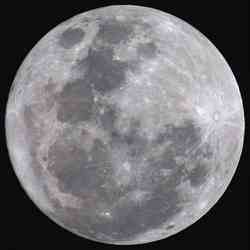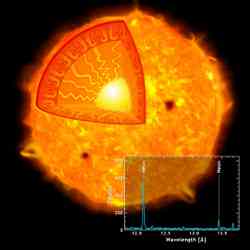
Illustration of Convection in Sun-like Star. Image credit: NASA/CXC/M.Weiss. Click to enlarge
NASA’s Chandra X-ray Observatory survey of nearby sun-like stars suggests there is nearly three times more neon in the sun and local universe than previously believed. If true, this would solve a critical problem with understanding how the sun works.
“We use the sun to test how well we understand stars and, to some extent, the rest of the universe,” said Jeremy Drake of the Harvard-Smithsonian Center for Astrophysics in Cambridge, Mass. “But in order to understand the sun, we need to know exactly what it is made of,” he added.
It is not well known how much neon the sun contains. This is critical information for creating theoretical models of the sun. Neon atoms, along with carbon, oxygen and nitrogen, play an important role in how quickly energy flows from nuclear reactions in the sun’s core to its edge, where it then radiates into space.
The rate of this energy flow determines the location and size of a crucial stellar region called the convection zone. The zone extends from near the sun’s surface inward approximately 125,000 miles. The zone is where the gas undergoes a rolling, convective motion much like the unstable air in a thunderstorm.
“This turbulent gas has an extremely important job, because nearly all of the energy emitted at the surface of the sun is transported there by convection,” Drake said.
The accepted amount of neon in the sun has led to a paradox. The predicted location and size of the solar convection zone disagree with those deduced from solar oscillations. Solar oscillations is a technique astronomers previously relied on to probe the sun’s interior. Several scientists have noted the problem could be fixed if the abundance of neon is in fact about three times larger than currently accepted.
Attempts to measure the precise amount of neon in the sun have been frustrated by a quirk of nature; neon atoms give off no signatures in visible light. However, in a gas heated to millions of degrees, neon shines brightly in X-rays. Stars like the sun are covered in this super-heated gas that is betrayed by the white corona around them during solar eclipses. However, observations of the sun’s corona are very difficult to analyze.
To probe the neon content, Drake and his colleague Paola Testa of the Massachusetts Institute of Technology in Cambridge, Mass., observed 21 sun-like stars within a distance of 400 light years from Earth. These local stars and the sun should contain about the same amount of neon when compared to oxygen.
However, these close stellar kin were found to contain on average almost three times more neon than is believed for the sun. “Either the sun is a freak in its stellar neighborhood, or it contains a lot more neon than we think,” Testa said.
These Chandra results reassured astronomers the detailed physical theory behind the solar model is secure. Scientists use the model of the sun as a basis for understanding the structure and evolution of other stars, as well as many other areas of astrophysics.
“If the higher neon abundance measured by Drake and Testa is right, then it is a simultaneous triumph for Chandra and for the theory of how stars shine,” said John Bahcall of the Institute for Advanced Study, Princeton, N.J. Bahcall is an expert in the field who was not involved in the Chandra study. Drake is lead author of the study published in this week’s issue of the journal Nature.
NASA’s Marshall Space Flight Center, Huntsville, Ala., manages the Chandra program for the agency’s Science Mission Directorate. The Smithsonian Astrophysical Observatory controls science and flight operations from the Chandra X-ray Center in Cambridge, Mass.
Original Source: Chandra News Release

